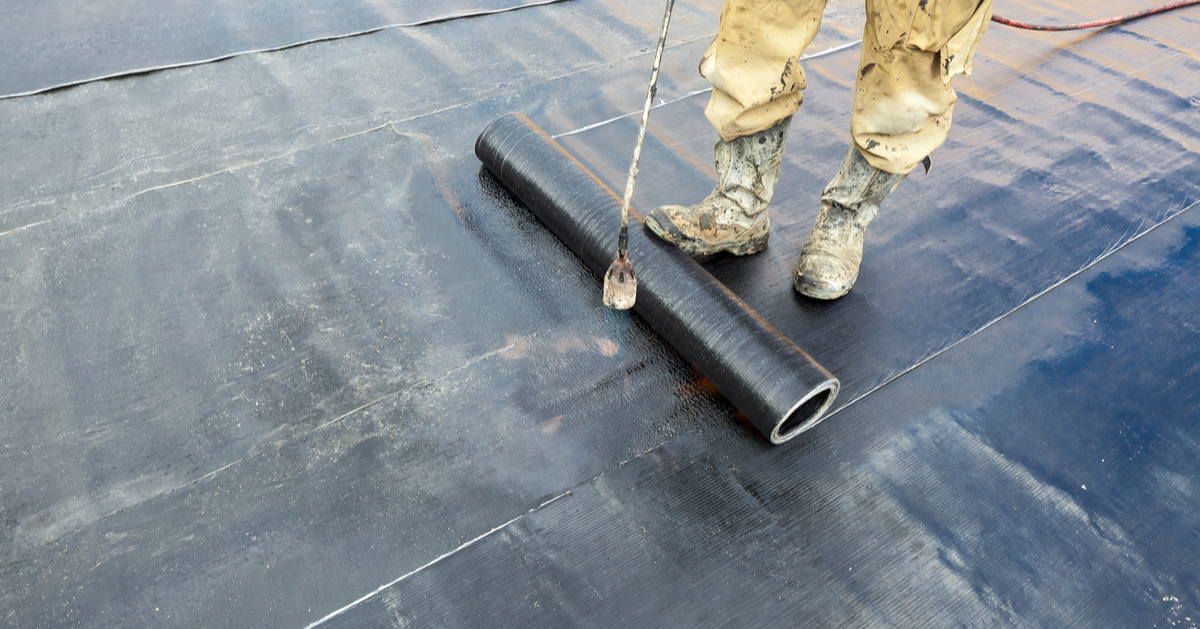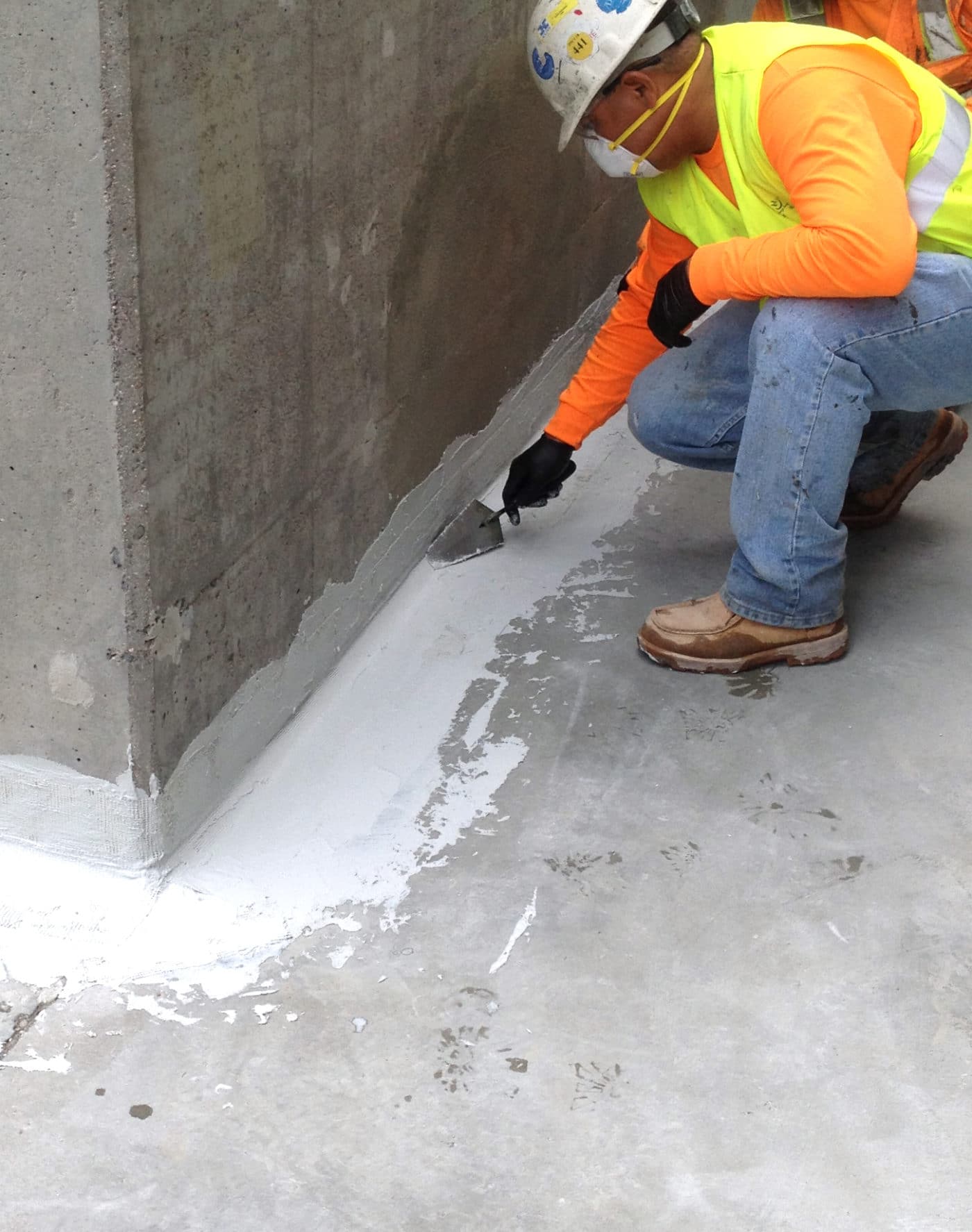Water Solutions That Actually Work: Omaha’s Most Effective Systems
Wiki Article
How Waterproofing Functions: A Detailed Check Out Techniques and Technologies
Waterproofing is important for safeguarding structures from moisture-related damage. It includes different techniques and technologies that develop obstacles versus water breach. Typical approaches, such as compacted clay, coexist with contemporary advancements like liquid-applied membranes. Recognizing the subtleties of these techniques is essential for reliable application. However, the effectiveness of any kind of waterproofing solution hinges not only on the methods utilized however likewise on continuous maintenance and inspection. What are the crucial elements that influence lasting performance?Understanding the Essentials of Waterproofing
Waterproofing is a crucial procedure that secures frameworks from water invasion, which can bring about considerable damages in time. This technique includes the application of various materials and strategies developed to create an obstacle versus wetness. The main goal is to avoid water from passing through surface areas, which can trigger damage, mold growth, and architectural instability.Various aspects influence the selection of waterproofing method, including the sort of structure, its place, and environmental conditions. Comprehending the physics of water movement and the residential or commercial properties of various materials is vital in picking an efficient waterproofing solution.Effective waterproofing not just safeguards structures but additionally improves their longevity and honesty. Usually, it is incorporated right into the design stage of building and construction to guarantee thorough security. As understanding of water-related concerns expands, the relevance of understanding waterproofing basics ends up being increasingly clear to architects, home builders, and residential property owners alike.Typical Waterproofing Approaches
Typical waterproofing approaches have been used for centuries, depending on tried and true strategies and materials to safeguard frameworks from water damage. One of the oldest methods involves using clay, which, when compacted, develops an all-natural barrier against wetness. Additionally, asphalt, a sticky, black material originated from petroleum, has been utilized for its waterproof homes, commonly put on roofs and foundations.Another strategy entails the application of lime-based plasters, which supply a breathable layer that allows dampness to leave while protecting against water ingress. Thatch roof covering, a conventional method still seen in some cultures, uses exceptional waterproofing as a result of its snugly loaded straw layers.Moreover, the use of stone and block has actually projected, as these materials are naturally resistant to water when properly set up. On the whole, conventional waterproofing approaches stress the significance of selecting appropriate products and building techniques to boost toughness against water intrusion.Modern Waterproofing Technologies
Innovations in contemporary waterproofing innovations have revolutionized the way frameworks are shielded from water damages. Innovative techniques such as liquid-applied membranes and innovative sealers have actually boosted the effectiveness and adaptability of waterproofing services. These modern technologies enable seamless application, decreasing the threat of leakages and making sure extensive protection over complicated surfaces.Moreover, the combination of wise innovations, such as dampness sensors and automated surveillance systems, makes it possible for real-time assessment of waterproofing performance. This aggressive approach assists in timely upkeep and minimizes long-term repair service costs.Additionally, advancements in spray-applied layers supply fast application and excellent adhesion, adapting to different substratums while offering durable defense. Strategies like polymer-modified systems additionally enhance versatility and durability, making them appropriate for diverse environments. Overall, modern waterproofing technologies not only minimize water intrusion however likewise add to the durability and sustainability of structures, noting a substantial change in the sector.Products Made Use Of in Waterproofing
The efficiency of waterproofing remedies greatly counts on the products made use of in their application. Different products are employed to create barriers versus water access, each with special residential or commercial properties matched for different settings. Commonly utilized materials consist of membranes, coverings, and sealants.Liquid-applied membrane layers, typically made from polyurethane or acrylic, form a smooth barrier that adjusts to intricate surfaces. Sheet membranes, typically created from rubber or polycarbonate, offer toughness and are ideal for larger locations. Furthermore, cementitious waterproofing materials, composed why not try this out of cementitious compounds, supply outstanding attachment and flexibility.Sealants made from silicone or polyurethane are necessary for joints and joints, guaranteeing thorough protection. Advanced products, such as geo-composite membrane layers, combine multiple features, improving efficiency. Overall, the option of waterproofing materials is vital in achieving durable and reliable water resistance, tailored visit our website to specific job needs and ecological conditions.
Usual Applications of Waterproofing
Waterproofing plays a crucial role in different sectors, making certain the durability and honesty of structures. Typical applications consist of property solutions that safeguard homes, business infrastructure that safeguards businesses, and commercial setups that require durable protection against dampness. Understanding these applications highlights the value of waterproofing in maintaining both security and functionality across various settings.Residential Waterproofing Solutions
Many house owners encounter challenges with wetness breach, making effective domestic waterproofing remedies essential. Various methods exist to address this concern, including exterior and interior waterproofing systems. Inside options often involve the application of sealants and coatings to basement wall surfaces, which assist avoid water seepage. Outside approaches commonly consist of the setup of water drainage systems and waterproof membranes that draw away water far from the foundation.Additionally, house owners might consider sump pumps to eliminate water buildup and dehumidifiers to control moisture degrees. Appropriate grading and using seamless gutters also play an essential role in managing water flow around the home. By carrying out these approaches, house owners can substantially decrease the threat of roof slab waterproofing water damage and mold growth, making sure a dry and safe living atmosphere.
Business Facilities Defense
Efficient waterproofing solutions play an important role in the protection of commercial infrastructure. Water Solutions. These techniques are important for protecting buildings, auto parking structures, and bridges from water damages, which can compromise structural stability and result in pricey repair services. Typical applications include the setup of membrane layers, finishings, and sealers that develop barriers against dampness seepage. Areas such as cellars, roof coverings, and outside walls are often prioritized to assure long life and longevity. In addition, waterproofing systems can boost energy performance by avoiding water-related issues that may bring about mold and mildew growth and wear and tear. By applying robust waterproofing measures, residential or commercial property proprietors can safeguard their financial investments and keep functional efficiency, eventually adding to the overall sustainability of commercial facilitiesIndustrial Applications Summary
While different fields encounter one-of-a-kind challenges, the need for reputable waterproofing remedies stays a continuous in commercial applications. Industries such as production, building and construction, and energy usually encounter atmospheres where moisture direct exposure can endanger architectural honesty and functional performance. In making centers, waterproofing is important for shielding machinery and materials from water damages. In construction, it safeguards foundations and basements against groundwater infiltration. The energy market counts on waterproofing for the security of devices in hydroelectric plants and offshore structures. In addition, food handling markets utilize waterproofing to assure hygiene and conformity with safety requirements. Overall, reliable waterproofing services are crucial for boosting longevity, safety, and productivity across numerous commercial settings.
Maintenance and Longevity of Waterproofing Solutions
Waterproofing solutions are created to use long-lasting protection versus wetness intrusion, normal maintenance is crucial to ensure their effectiveness and long life. Routine evaluations play a significant duty in determining potential problems such as splits, peeling, or indications of water damages. Dealing with these troubles immediately can prevent more wear and tear and pricey repairs.Additionally, cleaning up the surface of waterproof locations helps eliminate dust and particles that can jeopardize the integrity of the waterproofing barrier. It's additionally advisable to reapply safety finishings or sealers as recommended by makers to keep ideal performance. Ecological elements, such as UV direct exposure and severe climate conditions, can influence the life expectancy of waterproofing products, making routine analysis essentialFrequently Asked Concerns
Can Waterproofing Be Applied in Winter?
The inquiry of using waterproofing in chilly climate elevates concerns regarding adhesion and curing. Lots of items might not perform at their best in low temperatures, requiring careful choice and factor to consider of specific standards for effective application.How Much Time Does Waterproofing Usually Last?
The period of waterproofing efficiency differs based upon products and ecological aspects. Generally, it can last from five to 10 years, however normal maintenance and evaluations are important to ensure peak efficiency and long life.Is DIY Waterproofing Effective and Safe?
The efficiency and safety and security of DIY waterproofing depend upon different factors, consisting of material high quality and application technique. While some individuals accomplish satisfactory results, others might run into concerns that endanger long-lasting defense and architectural stability.What Are the Indications of Failing Waterproofing?
Indications of stopping working waterproofing consist of noticeable water spots, peeling off paint, mold and mildew growth, moldy odors, and wetness in walls or ceilings - Drainage & waterproofing company Omaha. These indications suggest compromised barriers, demanding prompt evaluation and prospective remediation to avoid further damagesHow Do I Pick the Right Waterproofing Professional?

Report this wiki page